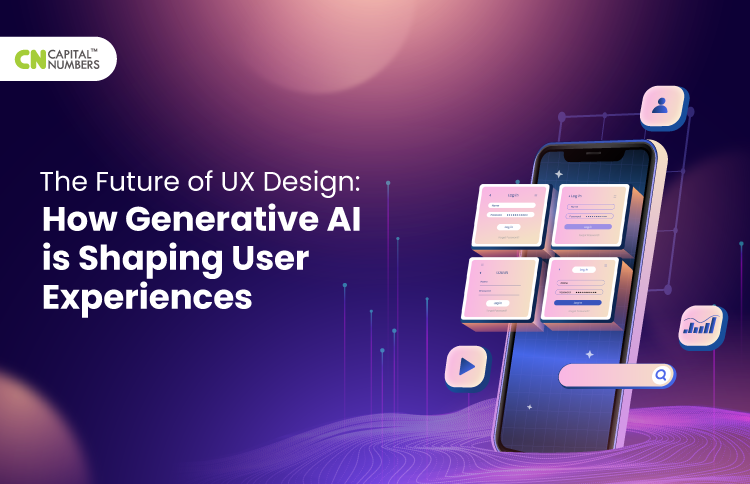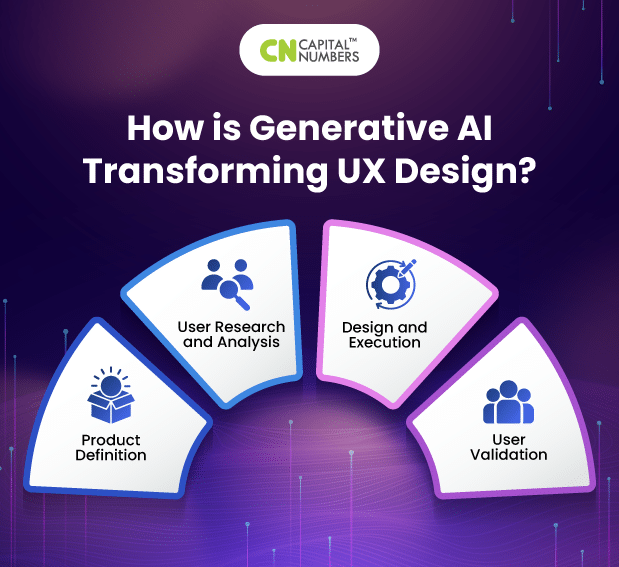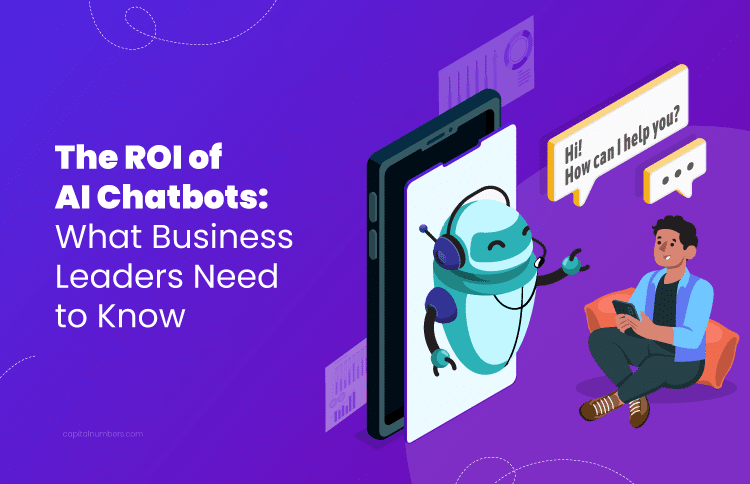The Future of UX Design: How Generative AI is Shaping User Experiences
Table of Contents
A few months ago, the launch of ChatGPT marked a significant turning point, leading to rapid advancements in AI technology. It seems like there is always something new to learn. Generative AI in UX designing is a game-changer, automating various aspects of the design process and enhancing the overall user experience.
From rapid prototyping and personalized design suggestions to data-driven insights and accessibility improvements, AI tools augment human creativity and streamline the design workflow. This synergy between artificial intelligence and designers enables the creation of user-centric, visually appealing, and highly engaging digital experiences.
While AI contributes to efficiency, it is essential for designers to interpret and refine AI-generated designs to align with brand goals and user needs. Ethical considerations are also important to ensuring privacy, fairness, and user satisfaction in AI-driven UX design. Also, this collaboration between AI and designers is the key to elevating user experiences and delivering innovative and data-informed designs.
Sound amazing? Eager to know about this in detail before opting for UI/UX design service? Let’s dive in.
What can Gen AI help designers with?
Here are several key areas where Gen AI can make a significant impact:
- User Research
- Wireframing
- Prototyping
- Visual Design
- Content Generation
- Usability Testing
- UX/UI Reviews and Iterations
- Product Definition
- Analyze Data, Generate Data Sets
Here, we need to know the UX process where Generative AI plays a valuable role by offering several benefits and capabilities that enhance various aspects of design and research.
| Product Definition | User Research | Research Analysis | Design and Execution | User Validation |
|---|---|---|---|---|
| Context Gathering | Previous Data Study | Qualitative Analysis | Low Fidelity Mockup | Internal/External Launch |
| Stakeholder Interview | Research Methodology | Quantitative Analysis | User Flow | Surveys |
| Scoping | Interview Guides | Insight Generation | High Fidelity Mockup | Insights Generation |
| Business Objectives | Task Design | User Persona | Visual Design | |
| Value Proposition | User Recruitments | Empathy Mapping | Prototypes | |
| Research | Complete | User Stories | Developer | |
| Objectives | Analysis | JTBD | Handoff |
How is Generative AI Transforming UX Design?
- Product Definition
Generative AI plays a pivotal role in shaping the product definition process by leveraging automation and data analysis. It assists in market research, trend analysis, and user data interpretation. It helps the designer to understand the business objectives, value proposition, and objective research. By fostering data-driven decision-making and comprehensive insights, Generative AI optimizes the product definition process.
AI tools that help in this process:
ChatGPT, Notion AI
- User Research and Analysis
Generative AI significantly augments user research by automating data analysis, persona creation, empathy mapping, sentiment analysis, and feedback categorization. It streamlines survey and content analysis, identifies trends, and suggests hypotheses for testing. AI accelerates report generation and assists in crafting well-structured surveys. While it expedites processes and provides data-driven insights, human researchers remain indispensable for contextual understanding, ethical considerations, and translating AI-generated insights into actionable recommendations. This synergy of AI and human expertise leads to more comprehensive and insightful user research, benefiting product development and enhancing the overall user experience.
AI tools that help in this process:
ChatGPT, QO QO AI (Figma Plugin), AI Designer
- Design and Execution
Generative AI supports wireframing and prototyping, visual design and execution, and revolutionizing the creative process in several ways. Generative AI tools can assist designers in creating wireframes and prototypes quickly. These tools can analyze user data and generate wireframes based on user preferences, helping designers understand user needs more effectively. It automates design tasks, such as generating icons, logos, layouts, and color schemes, expediting the design workflow. AI-driven systems provide layout suggestions that adhere to design principles and user preferences, enhancing the initial design phase. Moreover, Generative AI recommends typography, ensuring font choices align with design aesthetics and readability.
Generative design can also assist with image enhancement, content generation, optimizing visual assets, and ensuring they are tailored to different devices and screen sizes. Designers can benefit from A/B testing design variations generated by AI, which provides insights into the most effective design elements for users. Additionally, AI contributes to responsive design, data visualization, and creating animations and motion graphics.
AI tools that help in this process:
FigGPT, Mid Journey, Wireframe Designer (Figma Plugin), Automator (Figma Plugin), Galileo AI, WireGen (Figma Plugin), Content Reel (Figma Plugin)
- User Validation
Generative AI greatly improves the user validation process, streamlining the collection and analysis of user feedback to make informed design improvements. Using generative AI on user experience is highly beneficial. It helps create well-structured surveys and questionnaires, ensuring that data collection is comprehensive and relevant. AI excels in feedback analysis, summarizing and categorizing user comments, making it easier to pinpoint important trends and issues, especially when dealing with a large volume of user responses.
AI-driven natural language processing can analyze user comments to determine sentiment, helping gauge user satisfaction and areas of concern. Along with that, GenAI can process user interaction data to generate heatmaps that visually represent how users engage with a product, making it easier to identify areas of interest and potential problems.
AI tools that help in this process:
ChatGPT, Qo Qo AI (Figma Plugin)
Benefits of Using Generative AI in UX Design
- Fueling Creativity
Gen AI can be used to fuel creativity by helping designers explore new ideas and possibilities. -
Streamlining Design Process
Gen AI allows designers to iterate and experiment more quickly. It helps the designer to reduce the amount of manual effort required. -
Hyper-Personalization
Gen AI can be used to create personalized recommendations, content, and experiences that are tailored to each individual user. -
Focus on Problem-solving
Designers can focus more on higher-level strategic decisions and creative problem-solving, ultimately leading to more innovation. -
Ethical Concerns
Gen AI raises ethical concerns. It poses ethical challenges in bias, privacy, misinformation, discrimination, content ownership, and transparency. Addressing these concerns requires regulation and responsible use of AI technology. -
Loss of Human Touch
Gen AI could lead to the loss of human touch in UX as designers increasingly rely on AI-generated content. Relying too heavily on AI in creative processes may dilute the human element and authenticity in art and content. -
Prioritizing Upskilling
Designers who are not upskilled in terms of knowing the usage of AI will ultimately be less efficient, and might suffer challenges. -
Job Displacement
Gen AI could impact the role of UX designers as AI-generated content becomes more sophisticated.
Challenges of Using Generative AI in UX Design
You may also read : A Comprehensive Guide to Generative AI
Bottom Line
Generative AI is a powerful tool in UX design, making processes smoother, personalization better, and repetitive tasks automatic. It helps create user-friendly designs and analyze user data effectively. However, designers remain essential for interpreting AI-generated insights, ensuring ethical design, and infusing creativity into the process. The collaboration between AI and human creativity is key to improving user experiences and creating data-driven designs.
In short, the teamwork of AI and humans leads to stronger and user-focused designs, where data sparks creativity. With AI advancing, UX design will see a closer partnership between AI and human creativity, promising a better future for user experiences. If you’re looking for UX design services, choose Capital Numbers, a leading software development company offering quality services globally. Want to discuss your project? Book a call today!



















